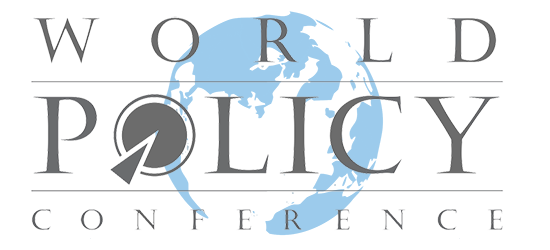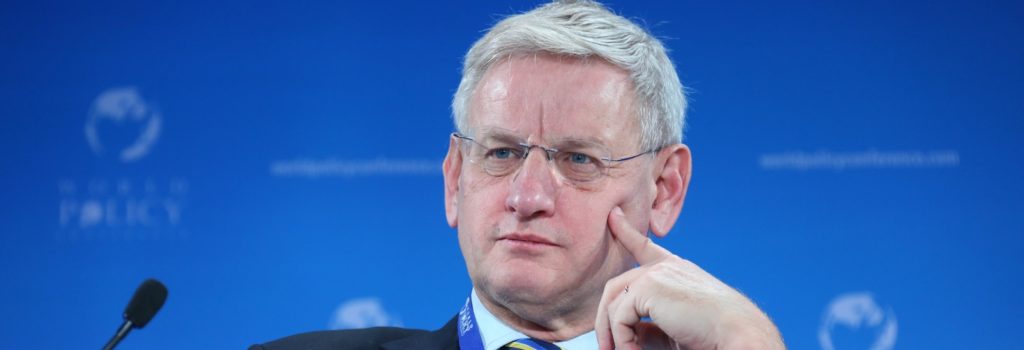
NATO headquarters in Brussels on Feb. 7. (Olivier Matthys/AP)
Are Finland and Sweden moving toward applying for membership in NATO after Russian President Vladimir Putin’s aggression against Ukraine?
There is no clear answer yet. NATO membership would be a fundamental change for both countries and must be carefully considered. ”Not hesitating, but with care,” as Finnish President Sauli Niinisto has said. Public opinion in both countries has swung heavily in favor of applying for membership of NATO, and the situation in the respective parliaments seems to be moving in the same direction.
The question is tied to a lengthy history. For Finland, which came out of World War II under the heavy shadow of Stalin’s Soviet Union, NATO membership was never an option during the decades of the Cold War. Sweden, meanwhile, feared that a move into NATO would result in Stalin grabbing complete control of Finland.
But after the dissolution of the Soviet Union, Sweden took the lead in applying for membership in the European Union. When I took over as Swedish prime minister after the 1991 election, seeking partnership with Finland in search of E.U. membership was a key objective, and soon thereafter Finland under then-Prime Minister Esko Aho followed.
Together, our two countries entered the European Union in 1995. The age of so-called neutrality — slightly superficial in the Swedish case and severely compromised in the Finnish case — came to an end.
Our countries subsequently entered NATO’s Partnership for Peace, along with Russia. With the three Baltic countries — Estonia, Latvia and Lithuania — regaining their independence, and Poland gradually moving toward membership of both E.U. and NATO, the situation in the entire region looked very different than during the Cold War.
It was only when Russia under Putin started to demonstrate that its threshold for using military force was lower than many had hoped — first with the war with Georgia in 2008 and then the invasions of Ukraine beginning in 2014 — that a debate on possible NATO membership started.
In both Finland and Sweden, governments set up independent assessments of NATO membership. These reports carefully noted the advantages that membership would bring for the security of the entire region. Both countries also took steps to upgrade their relationship with NATO to the maximum extent that was possible short of membership, and initiated far-reaching bilateral defense cooperation, later extended to NATO member Norway.
Now, Putin’s aggression against Ukraine has created a very new security situation. After initially hesitating, both Sweden and Finland decided on arms shipments to Ukraine, recognizing that the security of all of Europe is at stake. Of the at least 17,000 antitank weapons reportedly delivered to Ukraine, 5,000 are directly from Swedish army stocks. As a result, the relationship with the regime in Moscow will almost certainly be one of deep adversity as long as Putin remains in power.
There is no way back to a past of illusionary neutrality. The choice now is between remaining in a slightly uncertain in-between or recognizing a new reality and taking the step into full membership. It has not gone unnoticed that, in this crisis, the United States has drawn a firm line between the countries covered by NATO’s Article 5 mutual defense commitments and those that are not. Governments come and go, while treaty commitments endure.
It will boil down to politics and leadership. In Finland, the voice of President Niinisto will be decisive. In Sweden, the eyes are primarily on the Social Democrats ruling in a weak minority government. Having been firmly opposed to any NATO move only weeks ago, the party will now face a contest between an older generation and younger ones looking at the world with fresh eyes. That could well result in a U-turn of the sort that contributed to our E.U. membership nearly three decades ago.
There are separate processes in Finland and Sweden, but, in strategic as well as political terms, the countries firmly belong together.
Many factors have to be taken into account. NATO membership for Sweden and Finland would open up the potential of close defense integration with Norway and Denmark, with obvious benefits for all. Sweden and Denmark have declared their ambition to move toward a defense spending target of 2 percent target of GDP, and Norway and Finland are nearly there. This would create a more powerful deterrent against any revanchist Russian moves against the Baltic countries, thus making an important contribution to wider European and Atlantic security.
The long-term relationship with Russia must also be a key consideration. No Nordic country seeks to become a spearhead directed against Russia. In the years to come, we will probably see a Russia significantly weakened by the consequences of the insanity of the Putin aggression. But as long as Putin is in power, we will also see an increasingly despotic, desperate and accordingly dangerous regime.
E.U. defense options must also be on the table. These will take time to create and, with neither the United States nor Britain taking part, will involve limitations.
The road ahead must include strengthened European and Atlantic security structures, while also taking wider global challenges into consideration. A stronger European pillar within NATO, with an enhanced role for the E.U., is likely to emerge. For Finland and Sweden, the question over the next few months is how they will seek to contribute to the building of these new and necessary security arrangements.
There is no going back to how things were.
Read the original article on the site of The Washington Post.

